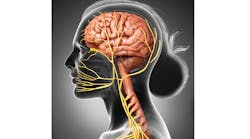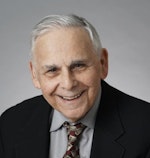What is a pain ghost?
Many patients visit the dentist because they experience what they believe to be dental pain. But why does this happen? Treatment plans can go awry. The three crowns you suggested for preventive reasons can evolve into unanticipated root canals, or postoperative pain can shift into an unusual pattern that does not make sense. For whatever reason, unexpected pain can economically affect your practice and dismantle patient expectations.
Whenever dental patients are treated, there is a small possibility that they will be accompanied by a phenomenon known as a "pain ghost." The ghost is difficult to recognize because it speaks a neuroscientific language-one that some dentists may have learned early in their education but now have difficulty recalling. The patient may describe their pain as in or around the teeth, mouth, or face in a way that might not match regular reports of dental pain. Or they may describe neuroscientific terms for which they do not have the vocabulary, making it difficult for dentists to comprehend their translation. Ultimately, what the patient describes is hard to understand because the dentist has primarily learned about nociceptive pain during dental school education.
Hopefully, the dentist will realize they are unable to understand the patient's explanation of their oral pain and will refrain from doing treatment, but unfortunately, this is not always the case. Sometimes nondental pain is treated with dental remedies that can result in either a nonresponsive pain cure or a worsening of it. So how can today's dentists recognize a gaggle of symptoms related to the pain ghost?
A ghoulish example
When the pain ghost speaks of the patient's symptoms, most dentists will not "see" what the patient describes. When a practitioner hears descriptions of symptoms not usually associated with dental pain, they somehow ignore them or do not give them the attention they deserve.
For example, a 26-year-old female patient has a history of episodic pulsating molar pain on her left side. She reported that she had experienced three or four bouts of severe, throbbing molar pain on her left side that lasted seven or more hours. Such pain repetitiously occurred for four months. During this time, she saw an oral surgeon who removed her wisdom teeth, but the pain came back. She also saw three other general dentists who were unable to explain the phenomenon. When the pain hit, the patient became nauseated and vomited. She believed the intensity of the pain induced the regurgitations along with the nausea.
If you encountered a patient with a similar affliction, you would learn that local anesthesia cannot relieve the pain because it is centrally initiated and located. So, what could be causing it? A migraine! Typical migraine pain is unilateral, pulsating, and induces nausea and vomiting. Many migraine patients often wish to rest in a dark room and experience sensitivity to light (photophobia) and sometimes sound (phonophobia).
In dental school you learned about the anatomy of the trigeminal nerve and its three branches (V1, V2, V3). Perhaps you also learned that migraine headaches were intimately involved with V1. Afferent fibers of V1 respond to the sterile neurogenic inflammation associated with the migraine headache and whose cell bodies are found in the trigeminal ganglia. The dendrites of those afferent fibers surround the meninges. A similar anatomical configuration is associated with V2, so when a migraine involves V2, it is referred to as a midfaced migraine with similar migrainous patient symptoms.
The pain ghost and OFP
Since dentists have not been trained to recognize the aforementioned symptoms, they become puzzled. How can severe dental pain associated with pulsating molar teeth have noncorroborating dental pathology? The answer is because it is not dental pain-this is where the pain ghost comes in.
According to the ADA, orofacial pain (OFP) is an underused specialty because it lacks visibility.1 There are 73 dental schools and only 12 have orofacial specialty programs (roughly 16%). How can dentists understand or recognize the multiple manifestations of the pain ghost if they have not been educated on the subject of orofacial pain? If 60 dental schools lack an OFP specialty program, it is also likely that the undergraduate dentists are not academically exposed to orofacial pain concepts or their clinical presentations.
Don't dismiss what your patient is telling you
It is important that dental professionals do not dismiss a patient's assessment of their own body and pain. OFP patients may say things like:
- "I have had pain in this tooth on and off for three years and no one can find what's wrong."
- "The dentist says the root canal is perfect, but the tooth still hurts."
- "Whenever I drink something cold, my gums hurt."
- "When I had COVID, my taste was OK. Now, suddenly, my food tastes like metallic materials or sulfur."
- "I have tooth pain that never goes away. Sometimes it's very low but other times it's severe."
The quantity or size of ghost pain reported by dental patients is unknowable. It is likely to be more than what has been publicized (which is little) because most dentists do not know how to look for or recognize it.
You have the education to recognize what the signs and symptoms of dental pain are. If a patient's symptoms don't match those of typical dental pain after an examination (including imaging), you need to hold back treatment. Using dental modalities to treat neuropathic pain may result in failure, patient dissatisfaction, patient injury, and unnecessary practice stress.
If it does not appear to be dental pain, it probably is not. An overriding mission is to do no harm.
Overall, one should not separate pain complaints from the economics of dental practice. They are intimately interconnected; the less attention you pay to pain-whatever its source-the more it may affect your bottom line.
Reference
- Heir GM, Markman S, Schwartz AH, Patil AG. Access to care: is the specialty of orofacial pain underrecognized and underused? J Am Dent Assoc. 2024;155(6):465-469. doi:10.1016/j.adaj.2024.04.007









